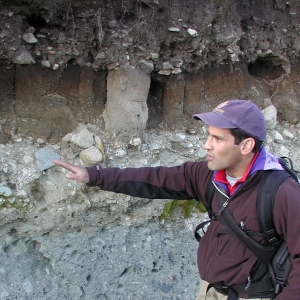Collaborative Research: RUI: Deep Drilling of Lake Junin, Peru: Continuous Tropical Records of Glaciation, Climate Change and Magnetic Field Variations Spanning the Late Quaternary
The National Science Foundation
Division of Earth Sciences, Research in Undergraduate Institutions
Award Amount: $1,293,333 | Effective Dates: 07/01/2014 – 05/31/2018 | Award ID: EAR-1402076
Project Personnel: Principal Investigator Donald Rodbell (Geology)
Project Summary: Our ability to understand the full complexity of climate change and forecast future regional trends requires that we extend the available instrumental records into the geologic past. Over the past several decades paleoclimatologists have developed myriad proxy indicators of past regional climate that are recorded in natural archives such as ice cores, cave deposits, and lake sediment, among many other archives. Proxy paleoclimate records from the tropics are particularly important because this region is the “heat engine” of Earth. Long- and short-term changes in ocean-atmosphere circulation that are manifested in such phenomenon as the El Nino Southern Oscillation (ENSO), the mean position of the Intertropical Convergence Zone, and the response of the tropics to high latitude climatic “events” are critical to understand because these phenomena can have a profound impact on regional water balance, which directly affects potable water supplies, hydroelectricity generation, and agricultural productivity. Lake Junin, the largest lake located entirely within Peru, is among the oldest lake basins in South America. It contains a sediment record that may extend more than 250,000 years. Lake Junin is exceptional in the length of record that it contains, but also in the climate signals that it records. Considerable prior research has documented that Lake Junin records the waxing and waning of nearby alpine glaciers and changes in regional water balance through the isotope geochemistry of calcium carbonate deposited on the lake bottom at a rate of approximately 0.2 to 1.0 mm/yr. This research will develop these and other proxy climate records for the full length of recovered core; the records generated will comprise one of the longest continuous records of climate and environmental change from the inner tropics.
College Grants & Sponsored Programs
NSF Supports Continuous Tropical Records of Glaciation, Climate Change and Magnetic Field Variations in Peru
LEARN MORE ABOUT:
17 South Lane, 2nd Floor
View in Google Maps
Theresa Polson
Associate Director of College Grants and Sponsored Programs
(518) 388-6169
polsont@union.edu
Mercedes Susi
Director of College Grants and Sponsored Programs
(518) 388-6984
susim@union.edu
